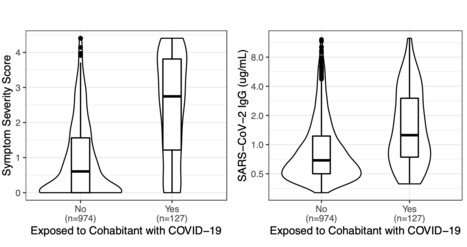Children are almost as likely as adults to become infected with coronavirus, but they are less likely to have symptoms, according to a new study published Friday. The new study, published in the journal JAMA Pediatrics, found adults and children living in Utah and New York City shared similar risks of becoming infected with coronavirus. But kids only had symptoms about half the time. "The study demonstrates that all along, children of all ages including infants and toddlers have had a similar risk of SARS- CoV-2 infection compared with adults," Dr. Flor Munoz, a pediatric infectious disease specialist at Texas Children's Hospital and associate professor of pediatrics at Baylor College of Medicine, wrote in an accompanying editorial. SARS-CoV-2 is the name of the coronavirus that causes Covid-19. "The fact that children, and especially young children, can transmit SARS-CoV-2 is now established and more clearly understood," wrote Munoz, who was not involved in the study. She added that the new findings should be considered in pandemic control efforts as well as vaccine and therapeutics research.
These findings were published just a day after the companies Pfizer and BioNTech officially requested emergency use authorization from the US Food and Drug Administration for their Covid-19 vaccine, at a smaller dosage, in children ages 5 to 11. The new research, conducted from September 2020 through April 2021, included data on 1,236 people from 310 different households with one or more children in New York City, and certain counties throughout Utah. Dr. Fatimah Dawood of the US Centers for Disease Control and Prevention and colleagues took a close look at the incidence of Covid-19 and found that among households with one or more people infected, the mean infection risk within those households was 52%, adding to the evidence that households remain a common place that the virus spreads.
Original findings published in JAMA Pediatrics (Oct. 8, 2021):
https://jamanetwork.com/journals/jamapediatrics/fullarticle/2785007



 Your new post is loading...
Your new post is loading...









